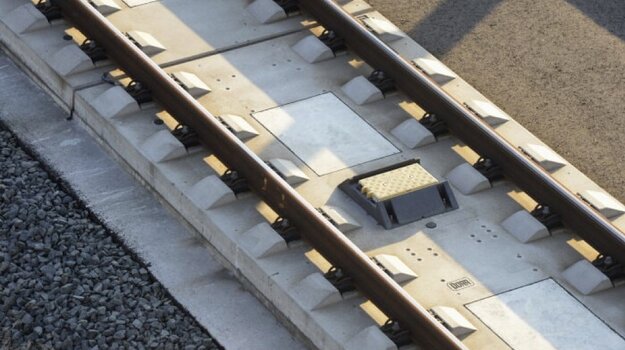
Study confirms: Digitalization of the rail system increases rail transport capacity
Digitale Schiene Deutschland (DSD) researches and develops digital technologies that fundamentally change the rail system. A recent study conducted by VIA-Con/quattron on behalf of Digitale Schiene Deutschland/DB InfraGO AG confirms the potential of digitalization to increase capacity on the railways. The study examines a network area in the Stuttgart region. In the best-case scenario, the use of digital technologies can be expected around 15% additional, potentially marketable train paths and a significantly greater effect on operational quality.
The study examines how the introduction of new technologies into the rail system affects capacity and operating quality in five scenarios that build on each other. It looks at technologies such as digital signaling technologies (DSTW), the European Train Control System (ETCS Level 2), optimized block division, automated dispatching via CTMS (Capacity and Traffic Management System) and other innovations such as highly automated driving (ATO GoA 2). The results show that the digitalization of the rail system is not an end in itself, but a means of significantly increasing the efficiency and capacity of the network without the time-consuming construction of new tracks. In addition, an improvement in operating quality can be achieved, which is particularly necessary on busy routes. In other words: more trains, at a higher frequency and with fewer delays and cancellations.
The results also show that the potential of digitalization goes far beyond the introduction of ETCS. In the various scenarios, it was confirmed that other factors lead to the around 15% increase in capacity that has been reported for some time. These include vehicle automation (Automatic Train Operation, ATO) and the intelligent capacity and traffic management system CTMS in combination with an Advanced Protection System, which in the last scenario approximately implements operation in "moving blocks". This also emphasizes the need for harmonious integration of vehicle and infrastructure equipment in order to unleash the full impact of digital technologies.
However, practical implementation depends on further system development and the equipment of the trains and, consequently, on corresponding investments. Technical challenges, such as effective on-board train integrity monitoring and the complete removal of block division restrictions, also still need to be overcome. The results of the study offer an insightful look into the future of the digital rail system and clearly show that the opportunities offered by cleverly designed digitalization in the overall system are immense.
Parts of the study were published in the February issue of the journal "Der Eisenbahningenieur". You can find the article here. (only in German)
